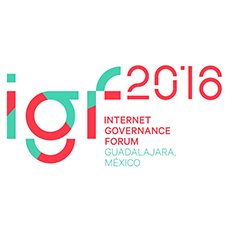Sustainable accessible goals for persons with disabilities
7 Dec 2016 11:15h - 12:45h
Event report
[Read more session reports and live updates from the 11th Internet Governance Forum]
The workshop was jointly organised by the Dynamic Coalition on Accessibility and Disability (DCAD) at ITU and the Global Initiative for Inclusive ICTs (G3ict), with the goal to suggest sustainable accessibility goals for persons with disabilities.
The first speaker, Francesca Cesa Bianchi, G3ict, presented key facts, which illustrated the importance of the Convention on the Rights of Persons with Disabilities (CRPD). Based on the CRPD ICT Accessibility Progress Report, which is published annually by G3ict and Disabled Peoples’ International (DPI). Bianchi presented facts that illustrated the advances in legislation and policies that impact digital accessibility. Among them are the following: 83% of countries in the global South and 80%in the global North have constitutional articles or regulations defining the rights of persons with disabilities; 48% of countries in the global South and 67% in the global North have a definition of reasonable accommodation; 17% of countries in the global South have a definition of universal service obligation in telecommunication legislations, that includes persons with disabilities, compared to 47% in the global North. Especially with regard to the last point. Bianchi argued that there remains room for advocacy. Yet, she also stressed that these facts highlight the impact that the CRPD had.
Gerry Ellis, Fellow of the Irish Computer Society and Accessibility and Usability consultant, started by pointing to the size of the global economics of disability. The market consists of 1.3 billion people with disabilities and a further 2.2 billion, which are connected to them via family ties. Together, they control 8 trillion dollars of annual disposable income. In order to develop appropriate products for this market, Ellis stressed the importance of standards. Europe, for example, developed a European Standard on accessibility requirements for public procurement of ICT products and services. Other countries are looking to implement this or similar guidelines. In the US, Section 508 of the Rehabilitation Act fulfils a similar purpose. Ellis pointed to the lack of enforceability on industry as a challenge. Another key challenge is that accessibility products need to be affordable. Ellis suggested that one way to achieve this is to create a global market. Agreed-upon global standards are a key element in bringing about such a global market.
Gunela Astbrink, member of the Australian chapter of the Internet Society, focused on small island developing states (particularly in the Pacific region), and the use of ICT by people with disabilities. Key challenges are infrastructure costs and remoteness and the Internet is used mainly through smart phones. Astbrink mentioned a pilot project in Vanuatu undertaken by the ITU and the Pacific Disability Forum, which interviewed more than 200 people with disabilities in order to improve ICT accessibility. One of the findings is that access was very low, yet the governmental goal for 2018 is to have 98% of the population accessing the Internet. It is notable that accessibility is taken into account as new government websites are developed. She suggested ways forward: multi-facetted approaches; support for gradual cultural change while recognising traditional values; awareness raising for governments and NGOs; implementation of policy, legislative and regulatory mechanisms; development of accessible websites and accessible facilities, products and services; subsidising cost for mobiles phones to increase affordability; and training in ICT usage for people with disabilities.
Judy Okite, Fee Software and Open Source Foundation for Africa (FOSSFA), talked about accessibility for persons with disabilities in the 21st century. She focused on the Internet of Things (IoT) and raised the question whether smart homes will be accessible to persons who are blind or deaf, or persons with mobility issues. Okite argued that, in order to ensure affordability, IoF applications need to be mainstreamed. At the same time, Internet penetration is still low in many areas, which suggests that the accessibility gap for persons with disabilities in developing countries might be widening as Iof becomes more important. She concluded by stressing that accessibility is about equality, justice, dignity, and inclusion.
In response to Okite’s presentation, moderator Andrea Saks, chairwoman of the Joint Coordination Activity on Accessibility and Human Factors (JCA-AHF) at ITU, stressed that we need to focus on implementation. One way of doing so is to stress data and measurement. In her presentation, Saks focused on accessibility for the hearing impaired and deaf. She began by giving a historical, as well as personal, perspective on advances in accessibility in relation to ICT. In conclusion, she pointed to a number of challenges. First, there is no universal sign language. This is solved on an ad hoc basis at global meetings but needs a more sustained approach. She also stressed the importance of universal design, the idea to keep the needs of different groups in mind already at the design stage instead of retro-actively adding expensive adaptations for persons with disabilities. She also gave examples of new devices being developed that fail to take into account the needs of persons with disabilities and pointed to the accessibility checklist provided by the ITU as a remedy.
by Dr Katharina Hoene
Related topics
Related event

